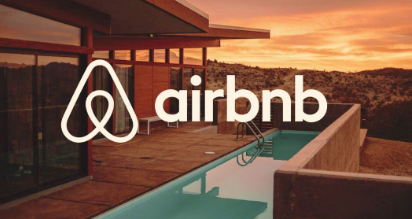
Global Influencer Marketing: From Worldwide Reach to Local Love
Scroll your feed in 2025, and you’ll notice a change: influence is no longer constrained by borders. U.S. brands are no longer relying on slick ads and extravagant billboards—they’re now partnering with creators who speak the world’s most universal language: authenticity.
From Tokyo to Toronto, brands are realizing global influencer marketing isn’t only about finding the most followed faces, but about finding the most trusted voices in everyone’s market. The outcome? Campaigns that feel local everywhere they are.
Let’s break down how smart U.S. brands are changing the creator game—adapting their strategies to connect with different cultures, languages, and audiences around the world.
From global message to local story
The old model of “one campaign fits all” does not work when people scroll through different languages and humor codes. Enter creator localization, essentially letting creators reinterpret the same brand story for their community.
Playbook Move #1: One Global Brief, a Thousand Local Stories
Coca-Cola’s 2025 Share a Coke campaign illustrates one fact: a global idea is best executed with local voices.
While a global brief was shared, creators were allowed to remix it based on QR-led experiences, local vernacular, and short-form video clips that felt authentic, not exported.
Why it works: Local creators know the memes, moods, and moments that make “sharing” hit differently everywhere.
Playbook Move #2: Co-Create Real-World Experiences
Airbnb blurred the line between marketing and experience by allowing creators to create real, bookable experiences.
Subscribe to our bi-weekly newsletter
Get the latest trends, insights, and strategies delivered straight to your inbox.
From anime-inspired tours in Tokyo, Japan, to salsa rooftop nights in Bogotá, Colombia, the collaborations helped normalize their creators as hosts, and their fans as storytellers.
Why it works: Real-world experiences fuel UGC loops. When audiences are part of the story, the content creates itself.

Playbook Move #3: Star Power Meets Street Cred.
Levi’s 2025 “Icons” campaign seemed to strike the right balance between global superstar and real-life micro-influencer action.
Each market showcased local creators’ style, highlighting how their clothing fit their identity, and Levi’s played a role in the culture. For example, the skate culture in Seoul or the thrifting/finding of vintage pieces in Paris—all of which established brand connections of timelessness in a hyper-relevant space.
Why it works: Micro creators convert better because their audience listens and then acts.
Playbook Move #4: Shopping that Is Creator-First
Sephora’s Squad transformed influencers into curators inside the app. Now, instead of just posts, creators create shoppable lists, allowing followers to discover, watch, and buy with a scroll.
Why it works: Having the “buy” option next to a trusted creator’s selection closes the loop of inspiration to checkout.
The new guide for global creator campaigns
What’s the difference between brands that achieve success from global creator strategies and those that just waste budgets? Here are some new rules:
1. Speak Global; Sound Local
A global message may only work when delivered in local slang. Brands that allow for creator localization—a statement of creative freedom for creators will drive higher engagement and cultural relevance.
2. Format Beat Script
The algorithm rewards formats, not advertising. Short-form videos, memes, and duets will outperform polished commercials in a TV style because they feel native to the platform.
3. Tiered Trust Strategy
The best global influencer marketing programs strike a balance between macro reach and micro trust. Big names for awareness, micro-influencers for conversions.
4. Measure Authenticity over Followers
In 2025, the new ROI metric will be the quality of comments. Authentic comments > inflated views. For the future, track sentiment, dwell time, and conversion versus absurd likes.
5. Keep Recurring
The smartest brands will not just rent influence for one post; they will grow it. Multi-month creator partnerships can build true advocacy (and would cost less engagement overall) as well.
Pitfalls to avoid
Even the most successful global campaigns can stumble when brands lose sight of what makes creators so special in the first place: authenticity.
Before you roll out your next global influencer marketing initiative, be on the lookout for these typical gaffes that drain the delight out of creator partnerships:
- One creative for all markets. It flattens culture and kills engagement. What works in New York won’t necessarily work in Seoul.
- Over-controlling. Micromanaging creators’ content distills the voice that their audiences actually trust. Provide direction, not a script.
- Short-term thinking. Viewing creators as an ad placement instead of a partner means you’re constantly starting from zero. Invest in the relationship for the long term. That’s where allegiance (and real ROI) lives!
Measurement and search engine optimization
From the POV of search engine and content strategy, brands seeking to own the conversation around “global creator” should create content assets to empower creators to repurpose: behind-the-scenes reels, creator-led explainers, region-specific case studies, and UGC.
These assets create backlinks, increase dwell time, and indicate topical authority for phrases such as global influencer marketing and international creators—keywords we’ve identified here.
Quick hack: post landing pages per market with creator stories or localized UGC in embeds, which enhances indexation for long-tail queries like “international creators for X market” or “creator localization case study.”
Fast functional checklist (for brand teams)
The management of transforming a great global influencer marketing idea into something actionable needs structure—and speed.
This is a fast checklist to support brand teams moving from strategy decks to scalable, creator-led campaigns that truly deliver:
- Identify 6–12 local creator partners for each priority market. Mix macro and micro.
- Compile a single creative brief with a market-specific appendix.
- Send a creator kit (including product, brief, and local assets) and a simple measurement dashboard.
- Contract 3–6 months and then have extension options. Exclusivity windows shouldn’t matter unless there’s community overlap.
- Run a two-market pilot, iterate, and scale.
What lies ahead for global influencer marketing
The future of global influencer marketing is more than just scale. AI-driven localization tools, real-time cultural listening, and creator-centric commerce will enable brands to create campaigns that feel uniquely human, even as they are scaled across continents.
Going forward, creators will continue to evolve from campaign partners to co-strategists—helping shape the brand story, guiding product development, and providing market insights. The brands we notice are not the loudest globally; they’re the ones that feel the most authentic locally.
Cut to the chase
The next era of global influencer marketing will be defined by authentic reach powered by local voices. AI and creator commerce will drive campaigns that bridge cultural divides. Brands that maximize creators as co-strategists are shining with a successful ROI. Ready to get ahead? Start piloting global stories with a local feel.


